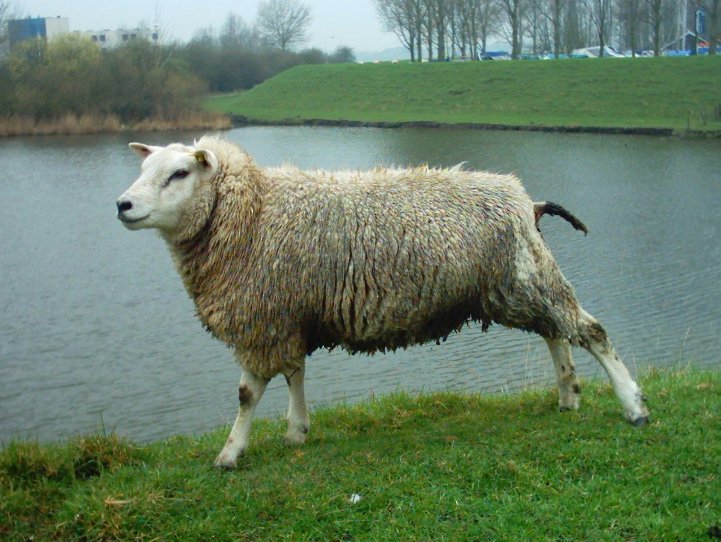

Ovis aries
Domestic sheep are most likely descended from the wild mouflon. Sheep were one of the earliest animals to be domesticated for agricultural purposes, with sources providing a domestication date between nine and eleven thousand years ago in Mesopotamia.
Domestic sheep differ from their wild relatives in several ways. First, wild sheep have uncrimped hair and short tails. Second, domestic sheep vary widely in color, while wild sheep have a smaller variety of colors.
Sheep have good hearing, and sense of smell. As for vision, they have horizontal slit-shaped pupils, and possess a wide peripheral field of vision with some ability to distinguish color. With what is estimated to be approximately 270° to 320° of wide-angle vision, sheep can see behind themselves without turning their heads (though this ability may be impaired slightly by any wool present around the eyes). However, sheep have poor depth perception; shadows and dips in the ground may cause sheep to balk.
Sheep are exclusively herbivorous. Ideal pasture for sheep is not lawn-like grass, but an array of grasses, legumes and forbs. There are common plants that are toxic to sheep, such as acorns, tomato, rhubarb, and potato.
In the wild, the ancestors of sheep were prey animals with a strong gregarious instinct. Thus, the domestic sheep conserve behaviors from their ancestors that help them to defend against predators. For example, they have a natural inclination to follow a leader to new pastures. Farmers exploit these behaviors to keep sheep together on open pastures and to move them more easily.
The picture of this Domestic Sheep was taken near the IJmeer, in the Netherlands, in March 2005.
Genus Ovis
Subfamily Caprinae
Family Bovidae
Order Artiodactyla
Subclass Eutheria
Class Mammalia
Subphylum Vertebrata
Phylum Chordata
Kingdom Animalia
Life on Earth
Index